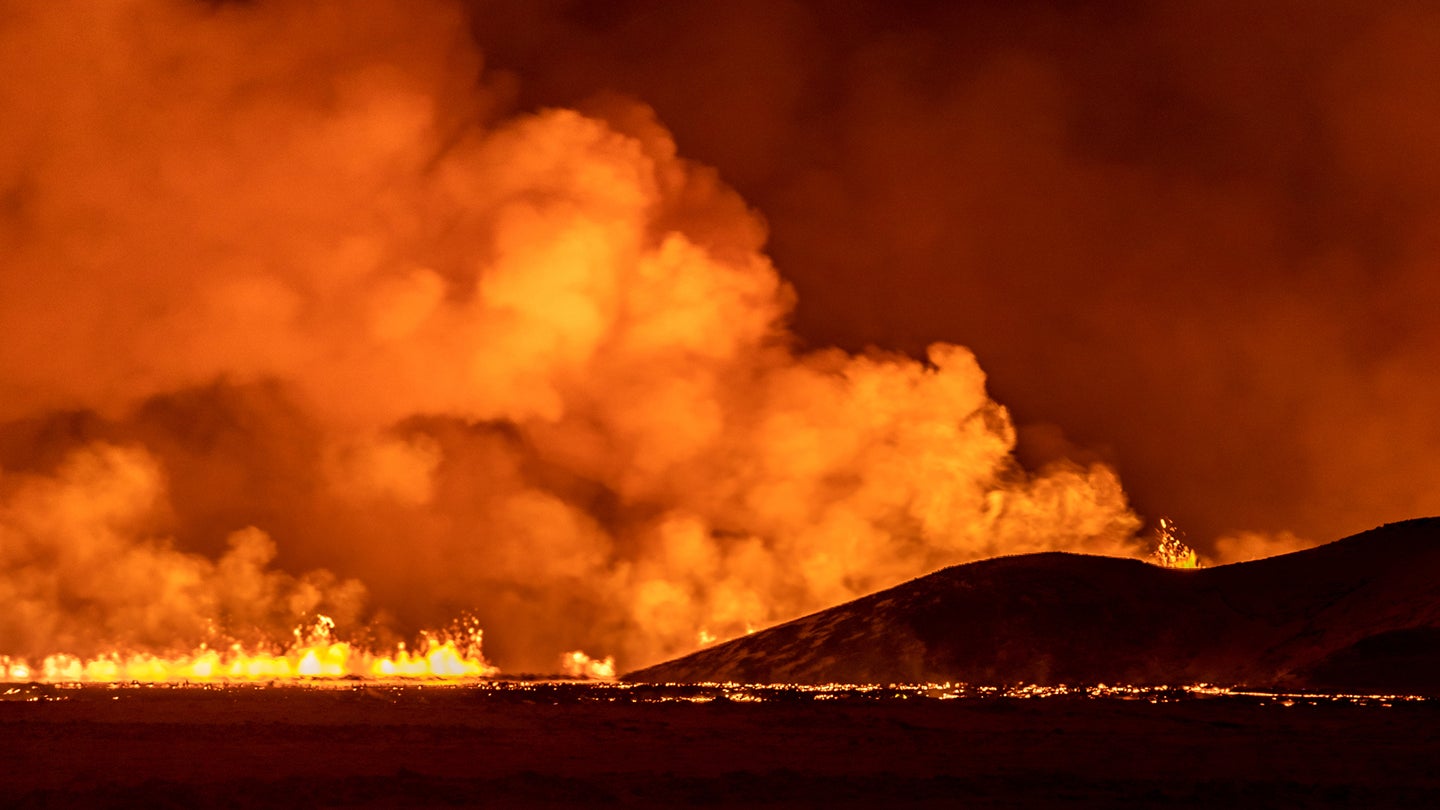Iceland volcano: Watch the Fagradalsfjall eruption live
By Chen Ly
NEW SCIENTIST
12/20/2023
Iceland’s Fagradalsfjall volcano, located on the Reykjanes peninsula in the south-west of the country, has erupted after weeks of earthquake activity.
The eruption started on 18 December at 22:17 local time, after a sequence of small earthquakes in the hour before. Enormous plumes of smoke and spews of lava have since been flowing from a nearly 4 kilometre (2.5 miles) long volcanic fissure.
Residents in the region have been bracing themselves for the eruption for the past couple of months, with heightened seismic activity since late October. In November, the 4000 residents of Grindavík – a town 40 kilometres (25 miles) from the volcano – were evacuated after experiencing a swarm of more than 1000 earthquakes.
The eruption is ongoing, though the latest update from the Icelandic met office states that the size of the volcanic eruption has decreased since yesterday evening. “The lava flow is estimated to be about one-quarter of what it was at the beginning of the eruption on 18 December,” according to their observations.
The town of Grindavik was preemptively evacuated back in November.
BY LAURA BAISAS |

Following weeks of increased seismic activity, a volcano erupted in southwestern Iceland’s Reykjanes Peninsula on December 18. According to Iceland’s meteorological office, the eruption began at about 10:17 p.m. local time, following a series of small earthquakes that began at 9:00 p.m. Between 3,530 and 7,060 cubic feet of lava was emerging per second at the time of the initial eruption, several times more than previous eruptions in this area. The eruption itself could stop at any time or continue for several months.
[Related: Geologists: We’re not ready for volcanoes.]
The roughly 2.5 mile-long fissure spewed semi-molten rock and red-tinted smoke into the air near Iceland’s main airport, the Svartsengi Power Plant, and the town of Grindavík. A community of about 4,000 people was evacuated in November following increased seismic activity that raised fears of an eruption and damaged several buildings. According to Grindavík Mayor Fannar Jónasson, no locals were present in the vicinity at the time of the eruption on December 18.
In a press conference, Iceland’s Prime Minister, Katrín Jakobsdóttir said “now we see the earth opening up. Our thoughts are with the local people as before, we hope for the best, but it can be clear that this is quite an eruption. It is important to give emergency responders space to do their work and follow traffic instructions.”
Volcanologists initially stated that the eruption had occurred in one of the worst possible locations due to its proximity to a power plant and Grindavík. However, the immediate situation did not appear as dire after a flyover. “If everything is normal, this will subside in the afternoon tomorrow, the crack will begin to retreat into craters. The eruption could last a week to 10 days,” volcanologist Ármann Höskuldsson told RUV on Monday. The eruption’s size was anticipated, but the direction of the lava flow remains unpredictable.
“This is larger than previous eruptions on Reykjanes,” volcanologists Magnus Gudmundsson, a volcanologist among the first people to observe the eruption from the air, told The New York Times.
Iceland sits just above a volcanic hot spot in the North Atlantic. The island nation of only 387,758 people averages an eruption roughly every four to five years. The Reykjanes Peninsula about 31 miles southwest of the capital city of Reykjavik. In November, the peninsula was hit by a swarm of over 1,000 small earthquakes in only 24 hours. It put the entire island on alert of an imminent eruption. One of Iceland’s largest tourist attractions, the Blue Lagoon geothermal spa was also closed temporarily due to its proximity to the seismic activity.
[Related: How the Tonga eruption rang Earth ‘like a bell.’]
“As is common with this eruptive style, it began with a sustained eruption of ballistics that, over time, has lengthened to form a fire curtain—a long fissure out of which lava is being violently ejected,” University of Bristol volcanologist Matthew Watson told the Associated Press. “This style of eruption is amongst the most spectacular ever seen, and there will be a strong pull for tourists, even though the Blue Lagoon complex has again shut.”
The most disruptive eruption in recent memory was the 2010 eruption of the Eyjafjallajökull volcano that spewed enormous clouds of ash and led to major airspace closures over Europe. This 2023 Reykjanes Peninsula eruption was not expected to release large amounts of ash into the air. According to Iceland’s foreign minister Bjarne Benediktsson, there are currently no flight disruptions and international flight corridors remain open.

Laura Baisas is a science news writer, covering a wide variety of subjects, but she is particularly fascinated by all things aquatic, paleontology, nanotechnology, and exploring how science influences daily life. Laura is a proud former resident of the New Jersey shore, a competitive swimmer, and a fierce defender of the Oxford comma.

No comments:
Post a Comment